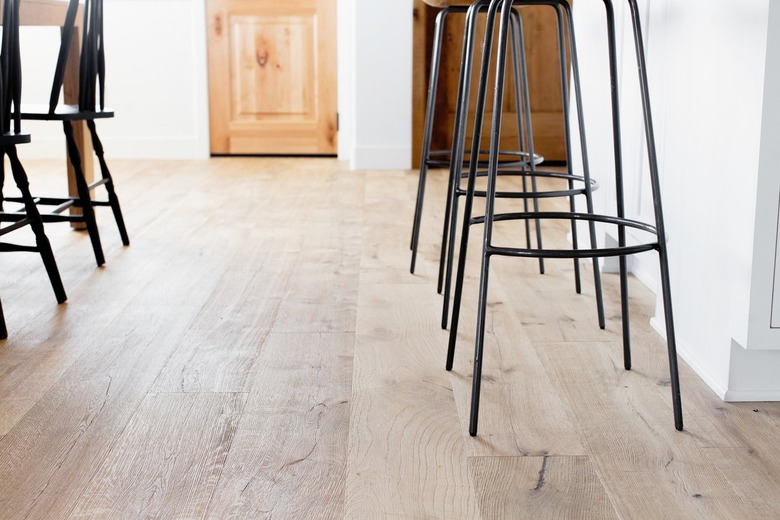What Type Of Wood Floor Is Scratch-Resistant?
While many wood floors are somewhat scratch-resistant, the true ability to resist scratches comes from both the hardness of the wood and the durability of the finish. In other words, an extremely hard wood, such as Brazilian walnut or ipe, naturally resists scratches, while a soft wood, such as pine, does not, but a good, factory-applied finish on even pine floorboards goes a long way toward helping the floor to remain scratch-free. Generally speaking, the harder the wood, the more it resists scratches, and a factory-applied finish resists damage better than a finish applied on-site in your home.
Wood-Hardness Basics
Wood-Hardness Basics
If you've ever worked with balsa wood on a craft project, you've noticed firsthand just how soft a wood can be compared to wood commonly used around the house for flooring or furniture. Wood hardness is rated on the Janka scale based on how many pounds of force are needed to push a small steel ball into the wood at half the ball's diameter.
Balsa, the softest wood, requires only 88 pounds of force, giving it an 88 on the Janka scale. By comparison, several white pine species sometimes used for flooring rank around 400 on the Janka scale. The hardest wood, Brazilian walnut, ranks at nearly 3,700 on the Janka scale, which shows just how much the hardness can vary from one wood to another.
Balsa wood is so soft that it's easy to scratch it with your fingernail, while virtually any wood used for flooring, including soft woods like Eastern pine, requires more effort to scratch. Northern red oak is the benchmark species used to compare other woods. It's fairly hard at 1,290 on the Janka scale, with white oak just slightly harder at 1,360. Find out which types of hardwood planks are available from your favorite flooring retailer and then compare the hardest two or three based on both your budget and the wood's hardness. Woods such as hickory and sugar maple are even harder than red or white oak and are thus good at resisting scratches.
Choosing a Scratch-Resistant Wood Floor
Choosing a Scratch-Resistant Wood Floor
If your budget allows for more exotic hardwoods, Brazilian versions of teak, walnut, cherry, and redwood all have more than 2,200 hardness on the Janka scale. Also take a good look at the color and the grain patterns on your top few choices to ensure they fit your design scheme. Woods with a strong grain pattern camouflage scratches better than woods with nondescript, minimal grain. Ultimately, choose the hardest wood you can afford that suits your stylistic tastes.
The finish is a huge factor in scratch resistance as well as scratch visibility. Ask your wood retailer about prefinished wood, as applying a finish in a factory allows for more durable coatings than what's generally available for application at home, even if dealing with the same wood species. For factory finishes, additives such as aluminum oxide make the wood more resistant to scratches. As far as scratch visibility goes, matte finishes do a better job of hiding damage than high-gloss or high-sheen finishes, as is true with paint sheens. Light flooring also hides scratches and dings better than dark flooring, so keep that in mind if you're considering a dark floor plank color.
